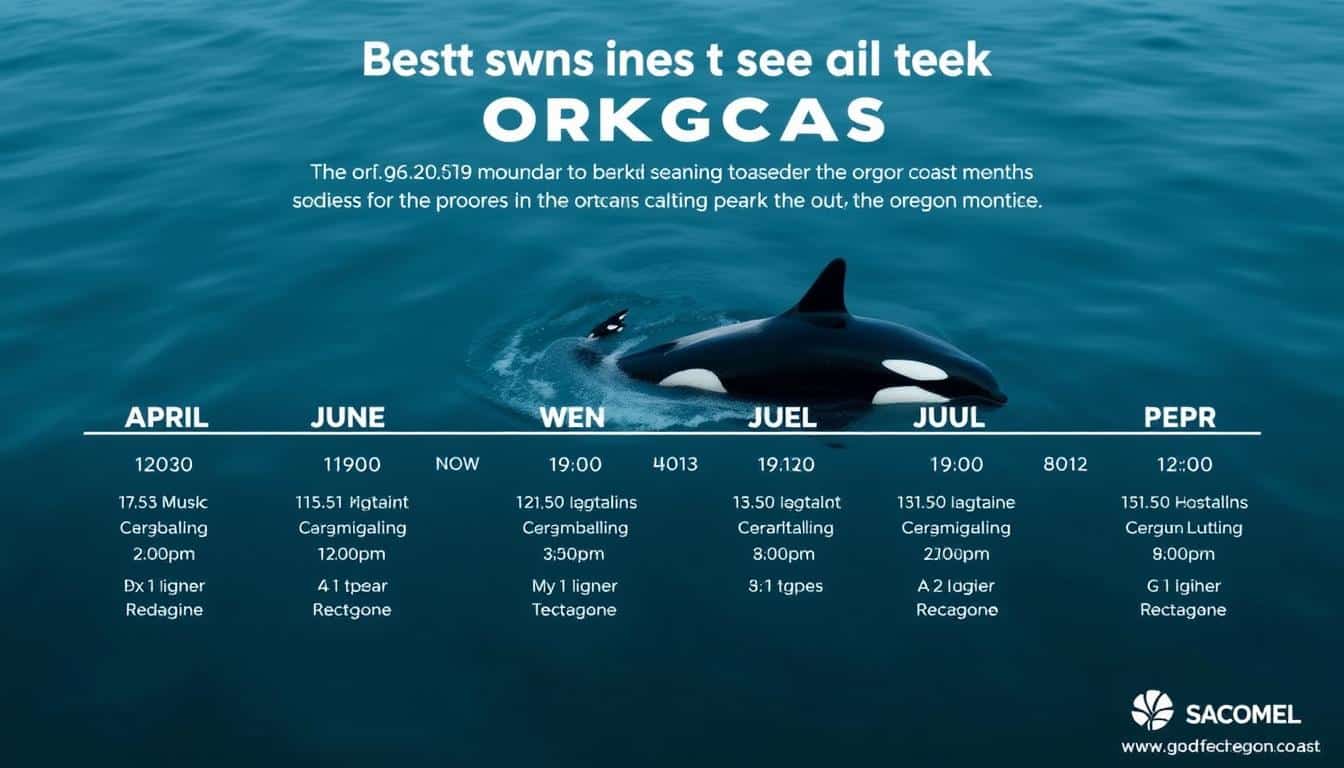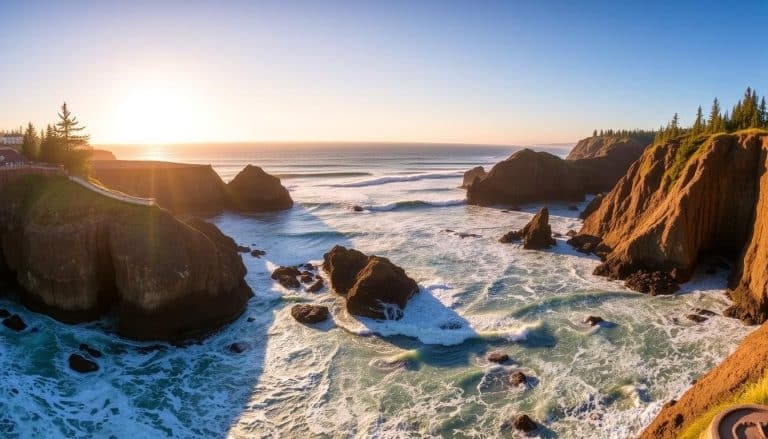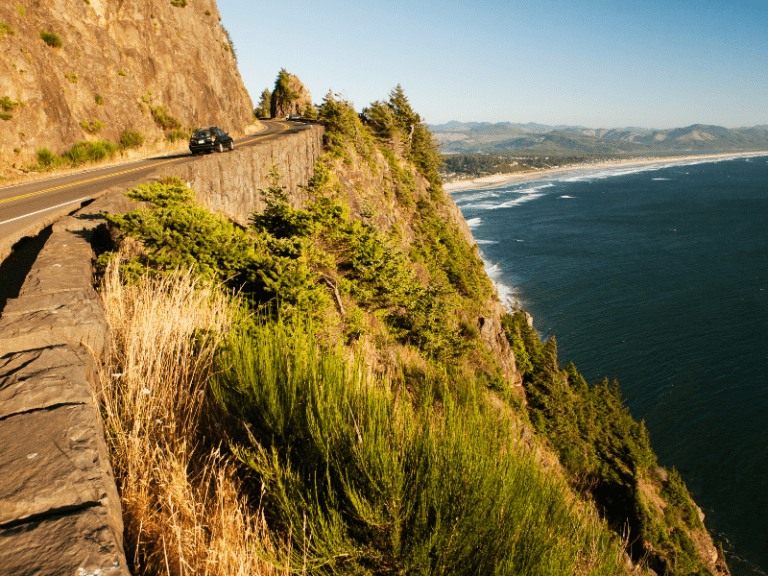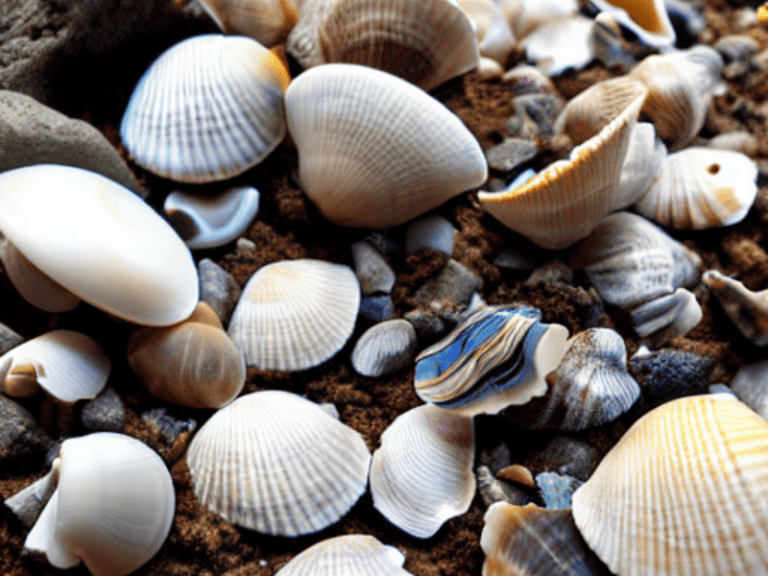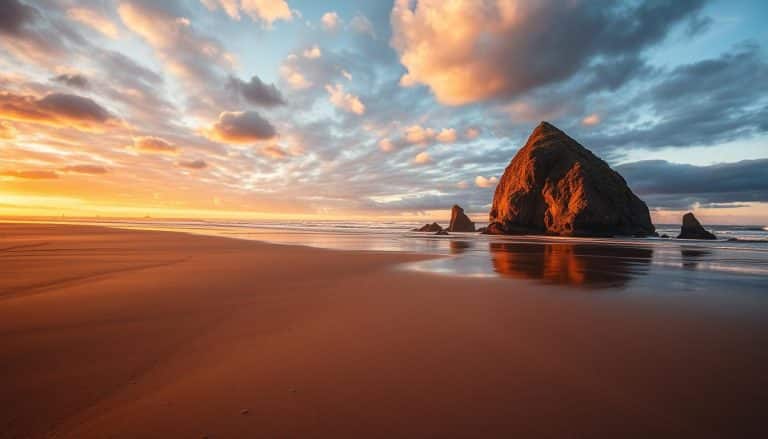Oregon Coast Orcas: Your Complete Guide to Ethical Whale Watching
This post may contain affiliate links. I may earn a small commission at no extra cost to you.
A pod of sleek black dorsal fins cuts through the waves just offshore. Suddenly, a massive orca launches itself completely out of the water in a spectacular breach, sending spray high into the air as onlookers gasp in amazement. This isn't a scene from Alaska or British Columbia – it's happening right along the Oregon Coast, where orca sightings have been increasing in recent years.
The Oregon coastline offers some of the Pacific Northwest's most breathtaking opportunities to witness these magnificent marine mammals in their natural habitat. Whether you're a dedicated wildlife enthusiast or a family looking to experience the magic of seeing killer whales in the wild, this guide will help you understand when and where to spot Oregon Coast orcas, how to identify different types, and most importantly, how to view them responsibly.
When to See Orcas Along the Oregon Coast
Peak orca viewing season runs from April through June along the Oregon Coast
Unlike the predictable gray whale migrations that bring thousands of whales past Oregon twice yearly, orca sightings are less regular but have distinct seasonal patterns. Understanding these patterns can significantly increase your chances of witnessing these magnificent creatures.
Peak Orca Season: April to June
Spring offers the best opportunity to spot killer whales along the Oregon Coast. During April, May, and June, transient orcas (also known as Bigg's killer whales) frequently hunt along the coastline, following the gray whale migration and targeting seal and sea lion pups that are abundant during this season.
Summer Residents: July to September
While less predictable than spring sightings, summer can bring encounters with small groups of transient orcas that remain in Oregon's coastal waters. These killer whales often venture into estuaries and river mouths in pursuit of prey, creating unique viewing opportunities from shore.
Occasional Winter Sightings: December to February
Though less common, winter can surprise wildlife watchers with orca appearances, particularly when southern resident killer whales occasionally venture south from their usual Puget Sound habitat in search of Chinook salmon.
The increasing frequency of orca sightings along the Oregon coast in recent years suggests these magnificent predators are finding our waters increasingly hospitable. Whether this represents a shift in their traditional ranges or simply better documentation through social media and citizen science remains an open question.
Best Locations for Spotting Oregon Coast Orcas
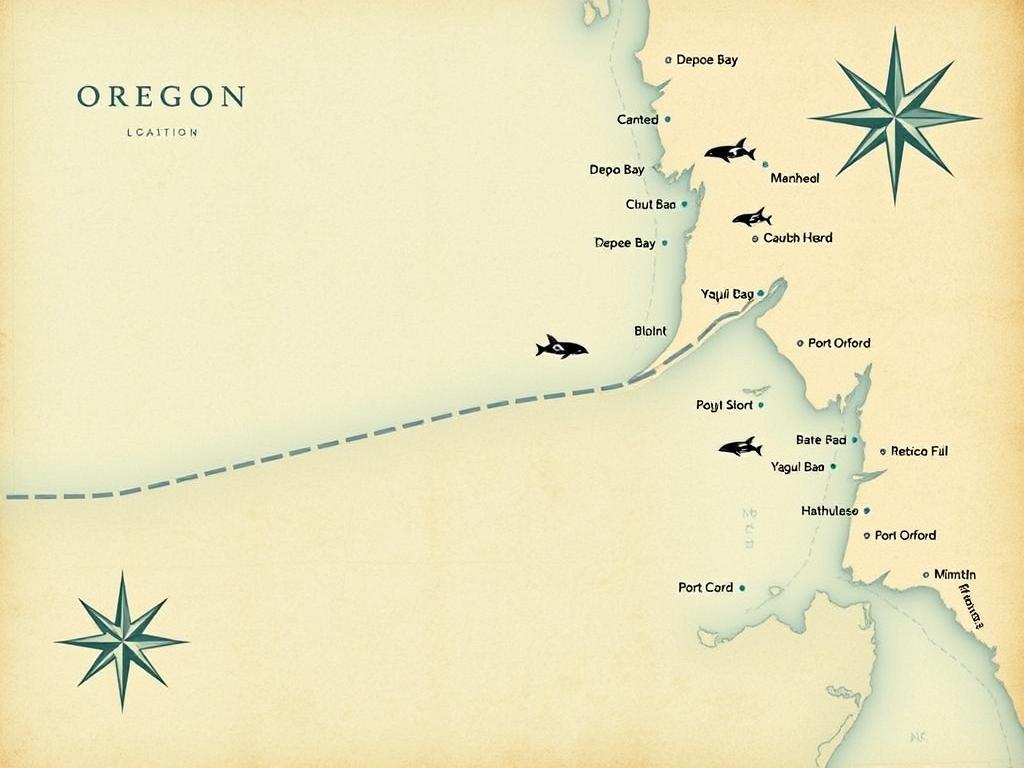
Depoe Bay
Known as the “Whale Watching Capital of the Oregon Coast,” Depoe Bay offers excellent viewing from its seawall and the Whale Watching Center. The deep harbor and nearby underwater canyons create ideal hunting grounds for transient orcas pursuing seals and sea lions.
Cape Perpetua
The highest viewpoint on the Oregon Coast provides sweeping ocean views perfect for spotting orca pods from a distance. The Cape's unique underwater topography creates upwellings that attract diverse marine life, making it a feeding hotspot for killer whales.
Yaquina Bay
Recent sightings have documented orcas venturing into Yaquina Bay and upriver, offering unique viewing opportunities from Newport's bayfront and the Yaquina Bay Bridge. The estuary's abundant harbor seals make it an attractive hunting ground for transient killer whales.
Other Notable Viewing Locations
- Port Orford and “The Gate” rock formation
- Cape Foulweather lookout north of Depoe Bay
- Siuslaw River mouth near Florence
- Coos Bay entrance
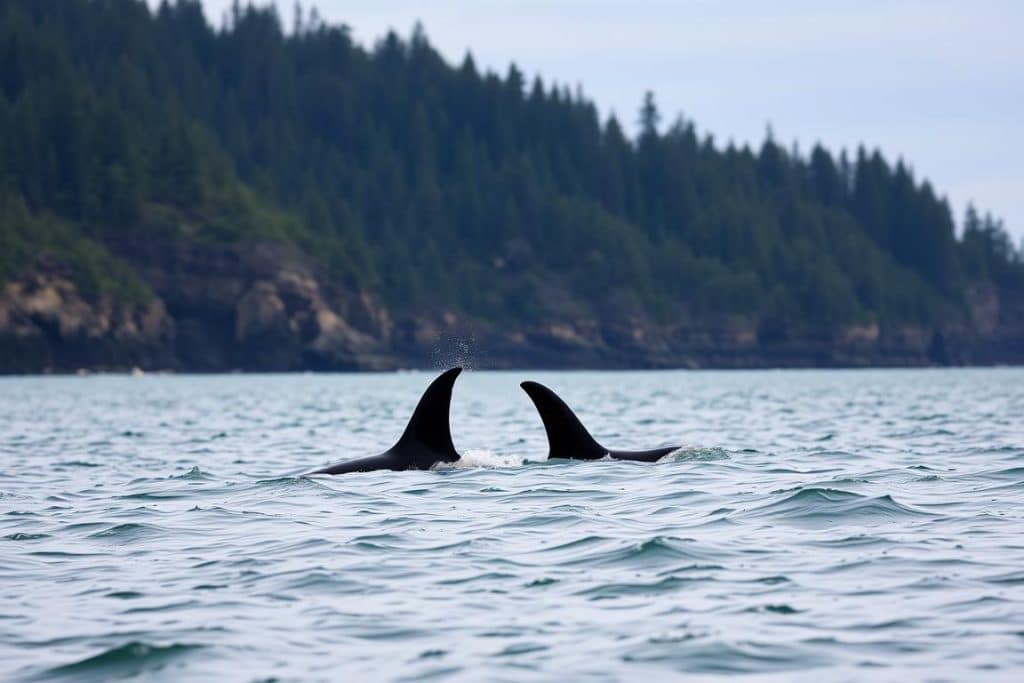
Understanding Oregon's Orcas: Types and Behavior
Not all killer whales are the same. The orcas you might spot along the Oregon Coast belong to distinct ecotypes with different diets, behaviors, and conservation statuses. Learning to identify these different types enhances your whale watching experience and contributes valuable data to research efforts.
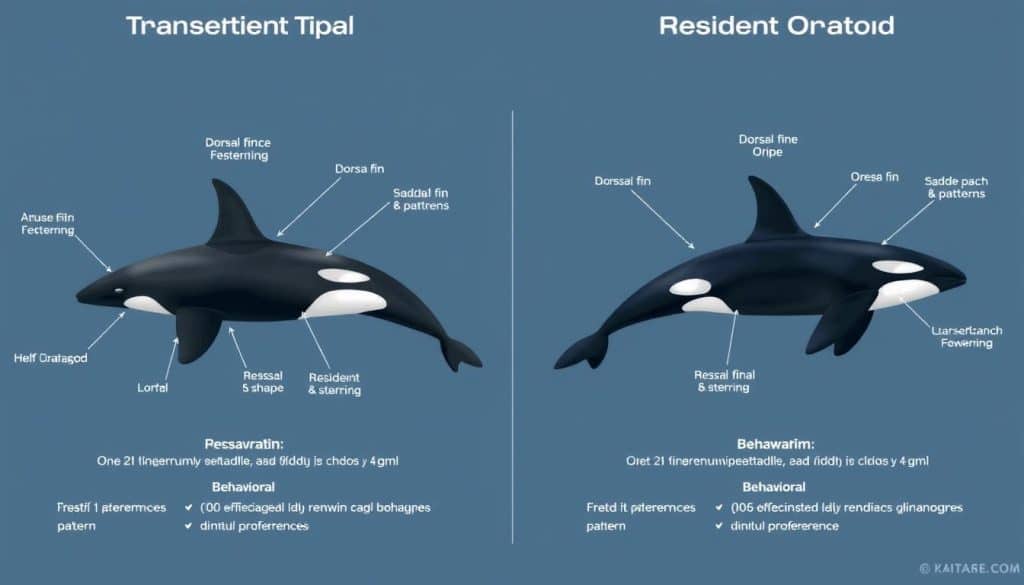
Key differences between transient and resident orcas found off the Oregon Coast
Transient (Bigg's) Killer Whales
The most commonly sighted orcas along the Oregon Coast are transients, also known as Bigg's killer whales. These marine mammal hunters travel in small, stealthy groups of 2-6 individuals and feed primarily on seals, sea lions, porpoises, and occasionally other whales.
Transient orcas are recognizable by their more pointed dorsal fins and solid gray saddle patches behind their dorsal fins. Their population is currently stable and even growing along the Pacific Coast.
Southern Resident Killer Whales
Rarely seen off Oregon, these endangered orcas primarily inhabit Puget Sound and the Salish Sea. They feed almost exclusively on Chinook salmon and travel in larger, more vocal family groups. Southern residents have been listed on Oregon's Endangered Species list, highlighting the importance of protecting the salmon runs they depend on.
Their dorsal fins tend to be more rounded at the tip with open saddle patches that contain unique black markings.
Did You Know?
Orcas are actually the largest members of the dolphin family, not whales! They're highly intelligent social mammals with distinct cultures and dialects that vary between populations. Each orca has unique markings that allow researchers to identify individuals, similar to human fingerprints.
Responsible Orca Watching: Ethics and Guidelines
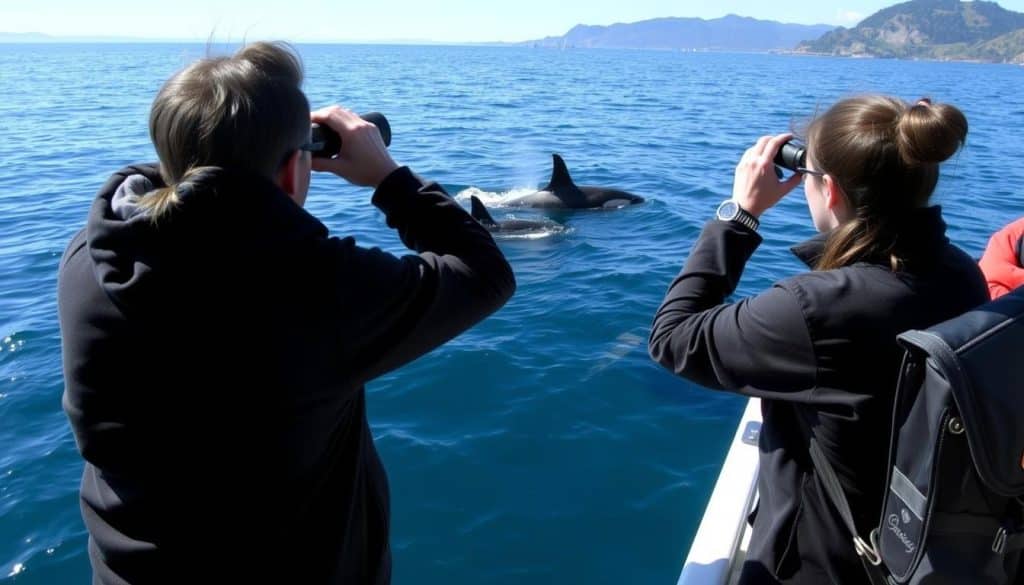
Responsible whale watching tours maintain a safe distance from orcas
Witnessing orcas in the wild is a privilege that comes with responsibility. Following ethical viewing guidelines not only protects these magnificent creatures but also ensures sustainable wildlife viewing for generations to come.
Viewing Guidelines
- Maintain at least 200 yards distance from all killer whales
- Limit viewing time to 30 minutes when other viewers are waiting
- Never approach orcas from the front or cut off their path
- Reduce boat speed and noise when within 400 yards
- Never use drones to photograph or film orcas
- Keep dogs leashed at shore-based viewing areas
Conservation Challenges
Oregon Coast orcas face numerous threats, including:
- Declining prey populations, especially Chinook salmon
- Ocean noise pollution disrupting echolocation and communication
- Chemical contaminants accumulating in their blubber
- Vessel disturbance from increased marine traffic
- Entanglement in fishing gear
Report Your Orca Sightings
Citizen scientists play a crucial role in tracking and protecting Oregon's orcas. If you spot killer whales along the Oregon Coast, please report your sighting to help researchers monitor their movements and behavior. Include the date, time, location, number of whales, and travel direction if possible.
Recommended Orca Watching Tours
While shore-based viewing offers excellent opportunities, responsible boat tours can provide unforgettable close encounters with Oregon Coast orcas. These operators prioritize the welfare of marine wildlife while offering educational experiences.
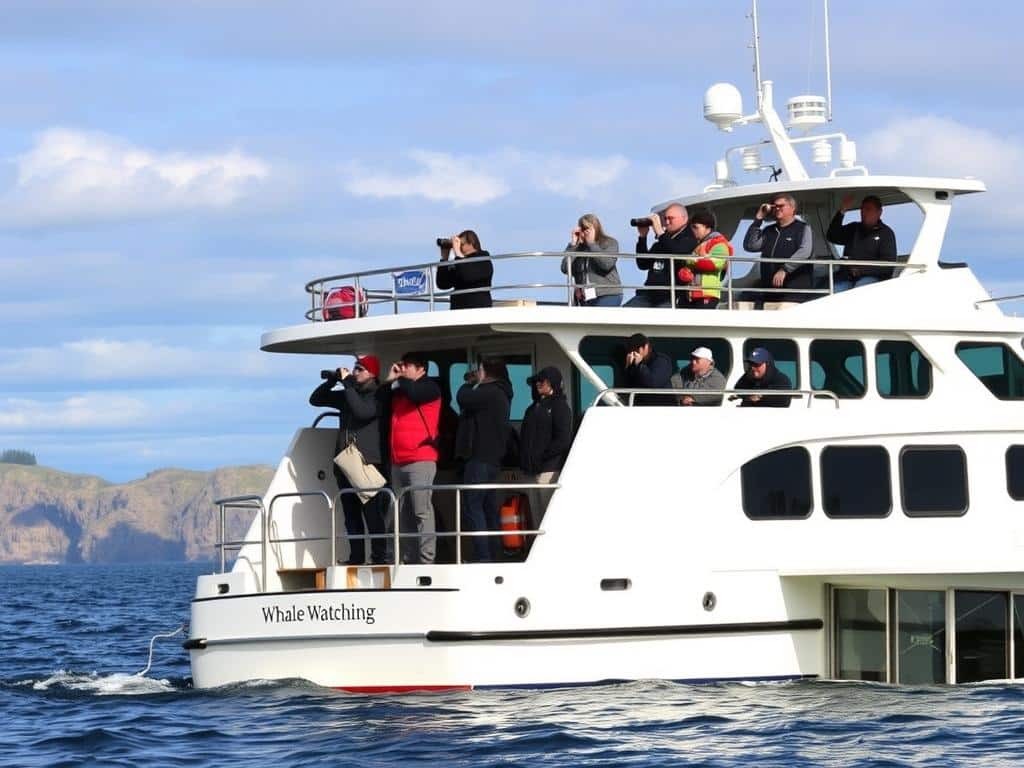
Depoe Bay Whale Watching
Operating small, environmentally friendly vessels with marine biologists on board, these tours offer intimate orca encounters with an educational focus. Their boats feature hydrophones to listen to underwater vocalizations when orcas are present.
Eco-Certified Hydrophones
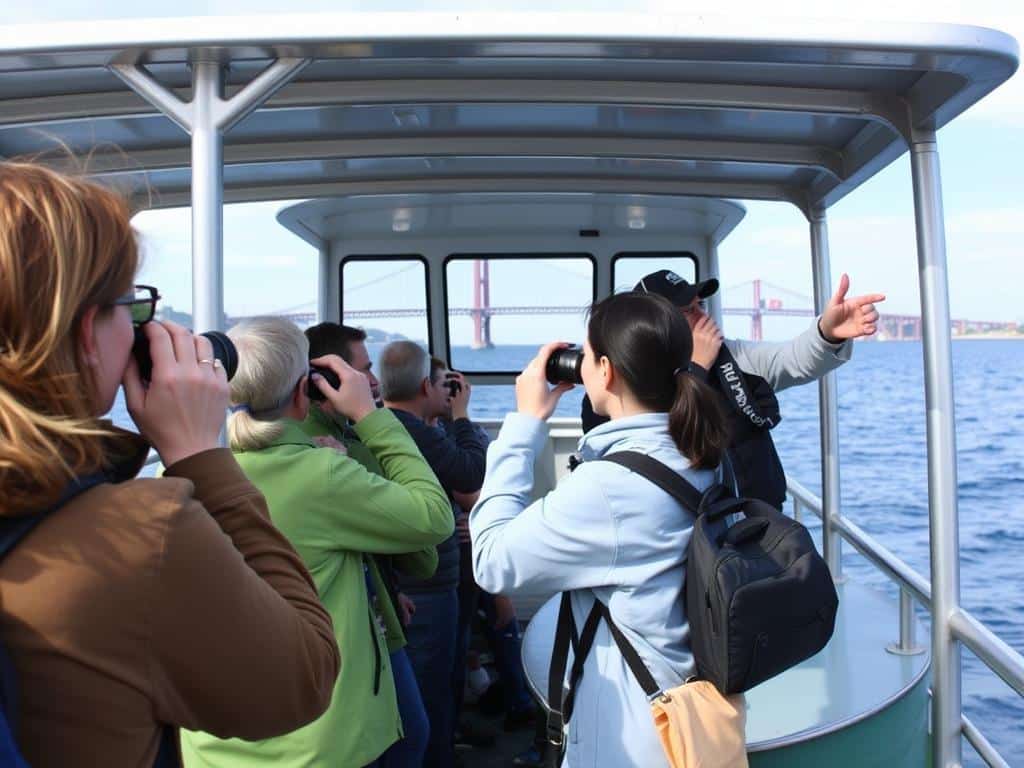
Newport Marine Discovery Tours
These family-friendly tours combine orca watching with comprehensive marine education. Their larger vessels offer stability and comfort while maintaining strict wildlife viewing guidelines. Each tour contributes to local marine research.
Family-Friendly Research Support
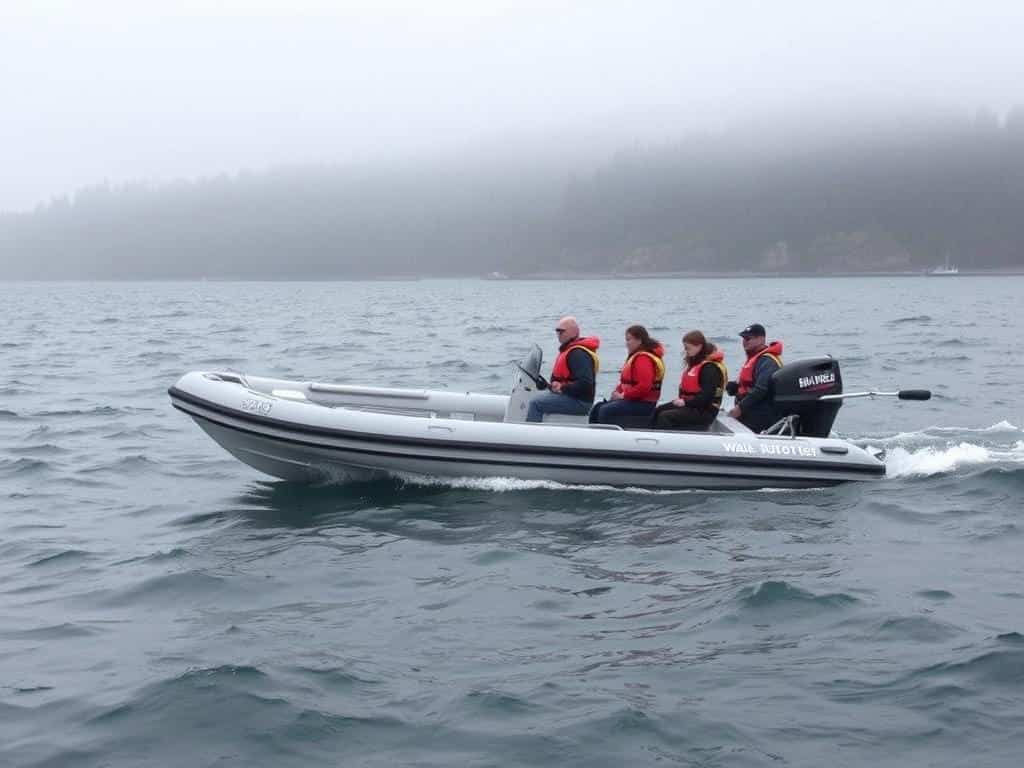
Port Orford Ocean Expeditions
Specializing in small-group zodiac tours, this operator offers more adventurous orca watching experiences in an area known for recent transient killer whale activity. Their nimble vessels allow for accessing viewing areas larger boats cannot reach.
Small Groups Adventure Focus
Tour Booking Tips
Book orca watching tours well in advance during peak season (April-June). Most operators offer flexible rescheduling if weather conditions are unfavorable. Ask about their wildlife viewing policies and what marine mammals have been recently sighted. Consider tours earlier in the day when seas are typically calmer.
Essential Tips for Your Orca Watching Adventure
What to Bring
- Binoculars (7×50 or 8×42 recommended for marine viewing)
- Camera with zoom lens (200mm+ for shore-based viewing)
- Layered clothing (coastal weather changes rapidly)
- Waterproof jacket and pants
- Sunscreen and hat (even on cloudy days)
- Water and snacks
- Field guide to marine mammals
- Motion sickness medication if boat touring
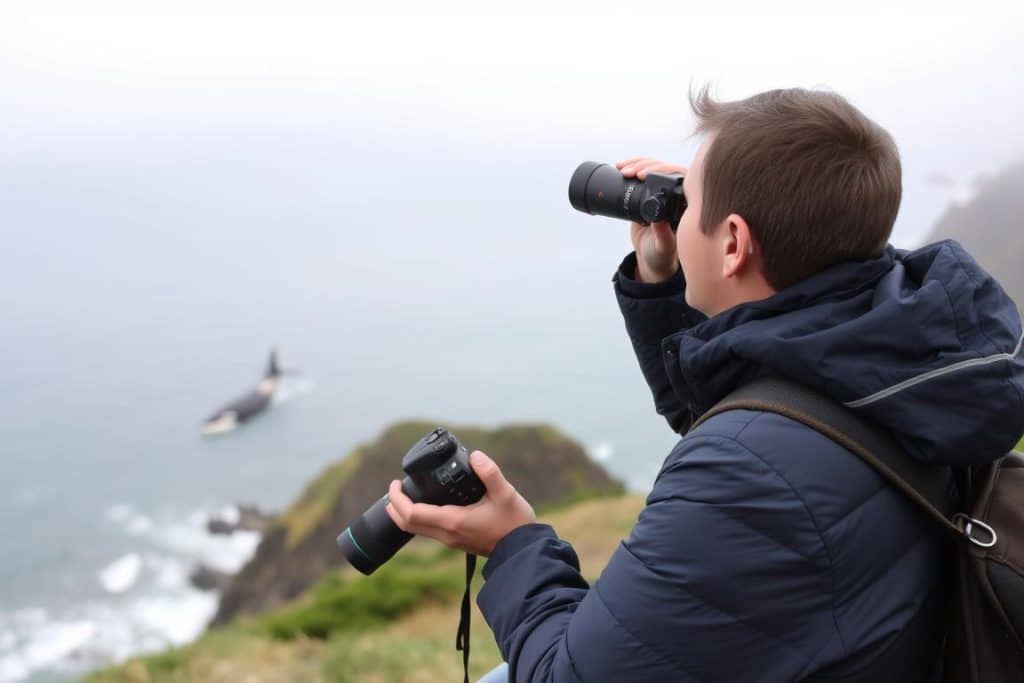
Viewing Tips
- Scan the horizon methodically rather than randomly
- Look for blows (spouts) which can be visible from great distances
- Watch for birds circling or diving (may indicate feeding activity)
- Be patient – successful wildlife viewing requires time
- Visit viewpoints during incoming tides when possible
Key orca viewing locations along the Oregon Coast
Supporting Orca Conservation
The future of Oregon Coast orcas depends on collective conservation efforts. Here are meaningful ways you can contribute to protecting these magnificent marine mammals and their ocean habitat.
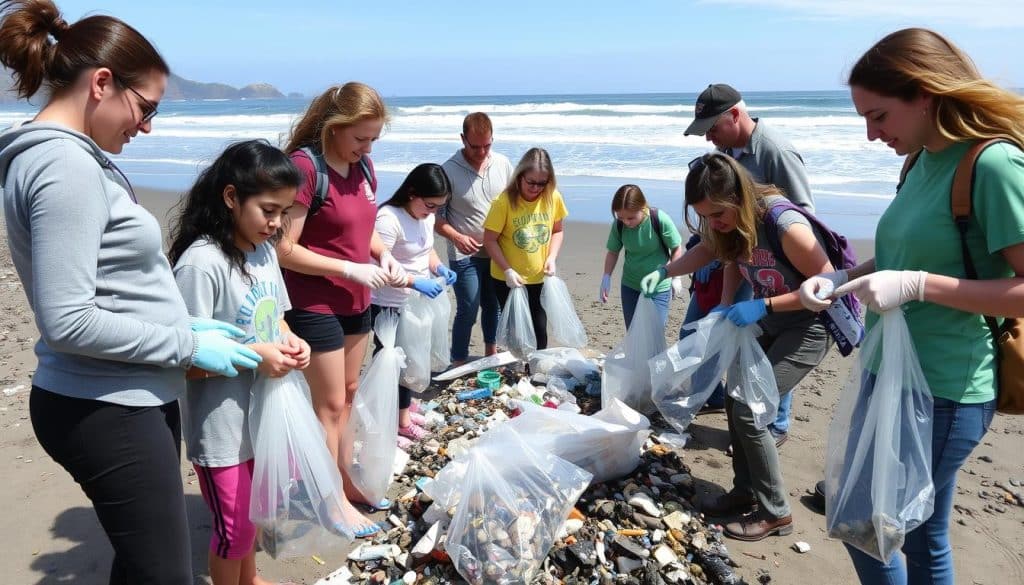
Beach cleanups help protect the marine environment that orcas depend on
Join CoastWatch
Become a CoastWatch volunteer to monitor a mile of Oregon coastline and contribute to orca sighting data. This citizen science program helps researchers track killer whale movements and behavior patterns along the Oregon Coast.
Support Salmon Recovery
Healthy salmon populations are essential for orcas, especially endangered Southern Residents. Support organizations working to restore salmon habitat, remove dams, and improve water quality in Oregon's rivers and estuaries.
Reduce Plastic Pollution
Marine debris and microplastics threaten orcas and their prey. Participate in beach cleanups, reduce single-use plastics, and support policies that address ocean pollution to protect the marine food web.
Experience the Magic of Oregon Coast Orcas
The sight of powerful orcas patrolling Oregon's coastal waters is an unforgettable experience that connects us to the wild heart of the Pacific Northwest. As sightings continue to increase along our shores, we have both an opportunity and a responsibility to appreciate these magnificent creatures while ensuring their protection.
Whether you're scanning the horizon from a scenic viewpoint, joining a responsible tour, or contributing to citizen science efforts, your orca watching adventure supports the growing awareness of these incredible marine mammals and the ecosystems they depend on.
Start Your Orca Watching Journey
Knowing where to find whales is a great start. But what should you bring on your trip? What type of binoculars do you need? We have researched and asked locals so you know before you go.


